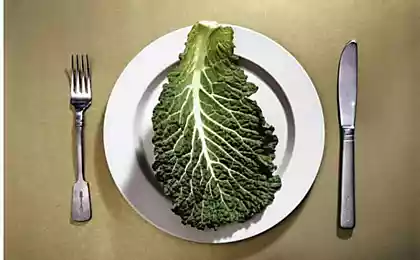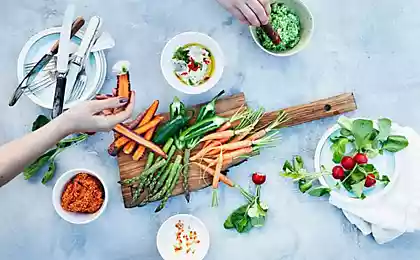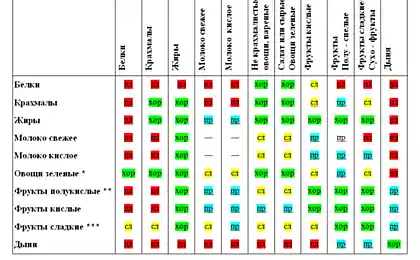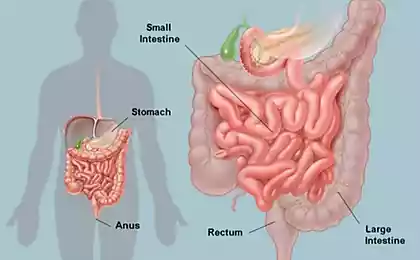929
Michael Pollan: the 25 rules of healthy eating that you acknowledge the wise
Today we give our food more attention than in any previous historical period. Books with recipes regularly become bestsellers, the profession of nutritionist is in demand as never before, the foundations of balanced diet are taught in schools all over the world. However, statistics of weight gain and the number of cardiovascular disease in people in developed countries, suggests that we are doing something wrong.
With the development of civilization people began to eat more unnatural, processed products (prosessed food), such as frozen foods, instant soups, and sweet desserts.
Nutritious and cheap fast food triumphant conquers even countries with historically strong culture of national cuisine, for example, Japan and China. Despite the fact that Japan occupies the last place in the ranking of Nations with overweight (only 5% of the total population of the country), there is the problem of obesity, associated primarily with the active transition of the population in the "Western diet".

The so-called "Western diet" is the consumption of large quantities of high-calorie foods and food high in fat: red meat, sweet desserts, simple carbohydrates and processed foods. Particularly this style of food affects those Nations and cultures that adopted it relatively recently.
Professor of journalism at UC Berkeley, is the author of famous books on what and how we eat, Michael Pollan (Michael Pollan) in his bestseller, "In defense of food" (In defence of food) gives the example of the experiment among the Australian aborigines, who have chosen an urban lifestyle. After several years of living in Western civilization among the natives appeared excess weight and health problems. This was due primarily to a sedentary lifestyle and improper nutrition.
The author of the experiment by Kerin o DEA (Kerin O'dea) has proposed ten members – men and middle-aged women with diabetes and high risk of cardiovascular disease – back in seven weeks to their traditional way of life. During the experiment, participants chose a place a few hundred kilometers from the nearest settlement, ravnoudalenie from the coast line of the ocean and freshwater rivers on the mainland.
The diet of the natives consisted of seafood (marine and freshwater fish), meat animals (crocodiles, turtles, kangaroos) and plants. In stark contrast to their former diet inside of "civilization" consisting of flour, rice, sugar, beer, powdered milk and cheap meat. In the experiment, all participants lost weight about 9 pounds and they had decreased pressure.
All caused by diabetes of the second type of violation in metabolism decreased significantly or disappeared completely. The study is not specified, has passed the aboriginal traditional way of life forever, but we can assume that if they returned to civilization, I went back and purchased all of their health problems.
Free online learning of Coursera is the second time offers the audience a series of lectures on healthy nutrition for child Child Nutrion and Cooking. The author of the course – Professor medical school Stanford Maya Adam (Adam Maya). A five-week course aims to attract the attention of parents to the problem of child nutrition.
Maya cites startling figures: more than 70% of all food in America is processed foods. Every third American student there are problems with excess weight. Today's generation of young Americans will be the first in history, life expectancy which is lower than their parents. Every third child born in 2000 will at some point be diagnosed with diabetes.
Mankind has redefined the culture of food consumption. In developed countries and large cities people eat just to quickly satisfy hunger and will go on to work or study. Altered the rules of food: now socially acceptable to eat at any time, almost anywhere. Food has become "fuel".
Edible oil
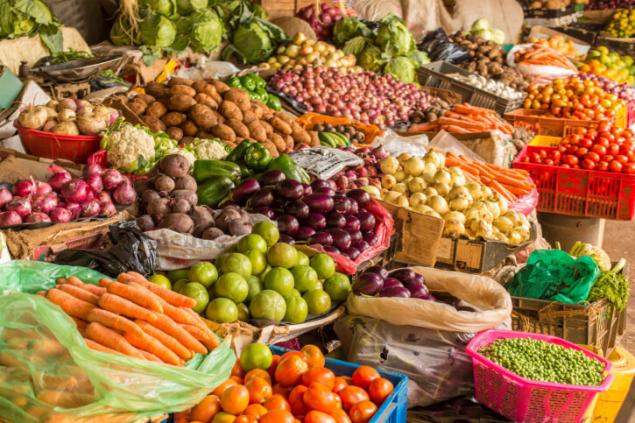
Many countries have issued official advice on nutrition. So, in 1992, the Ministry of agriculture of USA (USDA) has proposed to organize a consumption of products according to the principle of the food pyramid, the base of which lay the grains, the line above held equally vegetables and fruits, even higher — quality protein sources and dairy products, the last place was given to the fats and sweets.
In 2005, the power plan was changed to reflect new knowledge of dietitians. A new program called "My pyramid" (My pyramide), which is comprised of horizontal layers and segments, each of which designated food group: grains, vegetables, fruits, protein sources and dairy products. In 2011, the recommendations have again been adjusted.Now the official position on healthy eating is a program called "My plate" (plate Mu).
If a plate divided into four parts, two of which will be more then two small quarter is fruits and protein sources, and large – vegetables and grain products. On the edge of the plate is a small Cup of dairy products. Maya Adams says that 94% of school Lunches in America do not meet these standards.
In Russia there is no private food pyramid, however, the specialists of the Institute of nutrition of American approve of the project MyPyramid taking into account national peculiarities.
Professor Adams urged parents to instill in children the culture of food. Yes, we live in a world where there is no free time, and cooking at home can be a luxury, but we are talking about children's health, and there can be no compromise. It also offers parents to always keep at home a stock of certain products, so you can always have to make something useful.
Maya advises parents to cook with their children, to go to markets and choose the vegetables and fruits, to talk about the importance of quality food to grow onions or Basil on the windowsill, forming the right approach to nutrition, which will be saved the child for life.
Adams also advises to carefully read the label when choosing products in the store. For example, a product package may contain several servings, while the ingredients and calories listed for one serving. Recently, Management on sanitary inspection behind quality of foodstuff and medicines of the USA has introduced a bill, call all manufacturers to provide complete nutritional value and ingredients in a product packaging.
Legislators also asked to amend the allowable number of servings in one package, to make people more clear idea of how much product they consume at one time. For example, buying a bottle of fizzy drink volume of 600 ml, you are unlikely to drink only 250 ml (recommended daily allowance).
Therefore, under the new rules the label will indicate the total amount of sugar and additives in one bottle, 600 ml would be considered one serving. This will allow consumers to more clearly represent the number of calories and additives. So, the American Association of heart health recommends limiting consumption of sugar in the day, nine teaspoons for men and six for women.
Thus, at half-litre bottle of fizzy drink will contain the content of 58 grams of sugar and explaining that that is 230% of the recommended daily allowance.
Organika reasonable
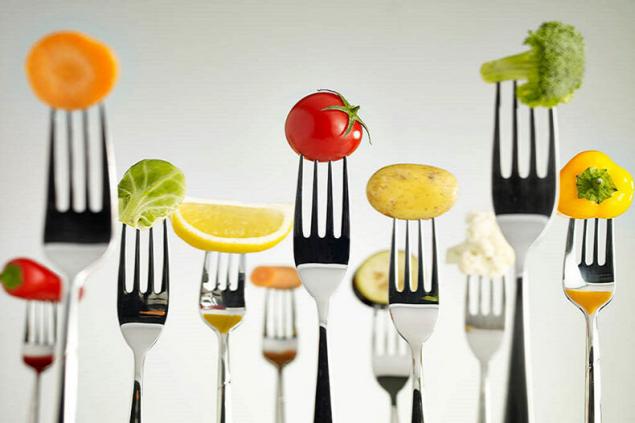
Now great attention is paid to organic food and ecological production, it is very important, but Adams notes that much more important not to form the opinion of the people "or organic or anything." It was impossible to raise the standards of requirements to products, if it requires a huge effort (both financial and organizational).
Choose the best of what is near you: fruits and vegetables grown in season in your area, local products as you can. Put the children in the school Breakfast nuts, vegetables and fruits. Tell them about products and food. Possibly have dinner with the whole family.
We live in the real world where nobody is perfect. Well, it is better to do something small steps forming in their children the correct attitude to food than to do nothing due to lack of time and opportunity.
Foods that you should always have at home (recommendation Maya Adams):
But despite such attention to the products that we still don't know for certain, we better have. Nutritional science is quite young, and she still doesn't answer all our questions. Michael Pollan tells how one day he realized that he had a lot more questions about nutrition than answers, then he decided to thoroughly understand what we want to eat to get the benefits and pleasure of eating.
Reasonable nutritional guidelines
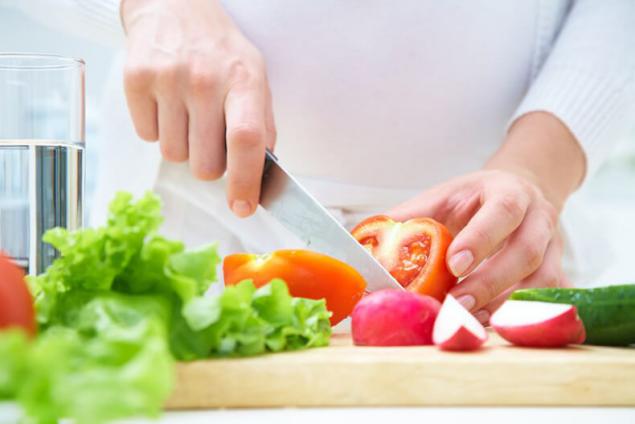
Despite the ongoing debate around certain products, there are two facts that are without controversy, and on which to rely in formulating for themselves a reasonable nutritional guidelines.
Fact one: the "Western diet" leads to "Western" diseases: obesity, diabetes, cardiovascular and cancer diseases.
Fact two: nation adhering to traditional dieting far less likely to suffer from these chronic diseases. Despite the fact that their diets differ and can contain large amount of fat. Over time, people adapt by their environment and diet, and it is beneficial to their health. The Western diet is the one which humanity has not adapted, and which causes disease. An amazing achievement of civilization.
Doing long-term studies of food, Pollan has formulated the basic principle of nutrition: you need to eat food. Bit. Mainly of vegetable origin.
Food production is a huge business industry that is responsive to the demands of consumers. While they never told us that you need to eat, we ate moderately the same as the people around us: mostly the products of their region.
Grocery Corporation sell people the idea of free time (which they will save, warming up frozen food), taste (fried in cheap oil, cheap meat), attractive prices and celebration. The hike in fast food restaurant is a family is a joyful event, it is through such emotions children used to unhealthy and unwholesome food.

Michael Pollan is the author of several books on nutritional principles: "the omnivores Dilemma" (Omnivores Dilemma) top ten best book of the year, and "Rules of Food" (Food rules). In the latter book, Pollan briefly formulated the basic principles of nutrition that will help to make your meal complete and and not to succumb to advertising grocery corporations. Here are some of them:
1) Eat food, not processed foods. Real food is the plants, animals and fungi.
2) do Not eat anything that your great-grandmother wouldn't consider food. She wouldn't have a suspicious color jelly plastic (possibly toxic) packaging.
3) avoid foods containing ingredients that you have not heard, or which you would not have to store at home.
Food emulsifier, cellulose, flavoring — what is it? Would you to use it if you would cook this food yourself? Many of the additives prolong shelf life of products, but regardless of whether they can harm your health, remember that quite a long time humanity got by without them.
4) avoid foods that contain corn syrup or syrup with high fructose. It is much worse than regular sugar and is a reliable symptom processed foods. Besides, corn syrup is very cheap, and it is added to a large number of products that were originally not supposed to be sweet (e.g. bread). Be careful if the manufacturer says "no corn syrup, contains real cane sugar". Cane sugar is still sugar.
5) avoid foods, on the label sugar is listed among the first three ingredients. Thanks to modern science there are more than 40 types of sugar. The brown rice syrup, fruit juice concentrate, sucrose is all sugar. And organic too. As for sugar substitutes, studies confirm that their use does not lead to weight reduction for unclear reasons.
6) avoid products which contain more than five ingredients. It's not the same as the recipe, which you cook at home. It is important that if the ice cream has five ingredients it is not longer ice cream.
7) avoid foods that contain ingredients whose name can not pronounce a third-grader.
8) avoid eating, the packaging of which warns of the harm. If food is the packaging, it already increases the chances that it is processed. The most useful section of the supermarket section of vegetables and fruit without industrial packaging.
9) do Not buy products labeled "light", "low fat" or "skim."
Proven fact – we gain weight by eating fat-free products. Because to remove fat from a product does not mean that it cannot be better. Simple carbohydrates and sugar (which is added to low fat foods to taste) contribute to weight gain. Campaign producing products with reduced fat content began in the 70-ies of the last century, for forty years, Americans have increased your diet by about 500 calories per day due to the simple carbohydrates, the average American now weighs 8 kg more than the same the average American seventies.
Producers of goods advertise food with reduced fat content, and consumers created a false impression that the "healthy" food can be eaten without restriction. Pollan says that in the survey people believed that a small piece of the product with a normal fat content of the harmful large with low content. Thus, eating low fat foods in fact consume more calories and gain weight.
10) avoid grocery imitations. A classic example of such a product is margarine, the first commercial product that was designed to replace the traditional oil and thereby reduce harm from the use cholesterol. It turned out that contained TRANS fats in margarine is much more harmful, increasing the risk of heart attacks. Soy meat, cream cheese without the cream and cheese in the composition, artificial sweeteners – it is an imitation products.
11) don't buy food if you saw her ads on TV. Two-thirds of food advertisements in the media promoting processed food and alcohol. The remaining tiny percentage of ads for whole foods, like nuts, only confirms this rule.
12) Choose food located at the edges of the supermarket and stay away from the center. Most grocery stores are arranged in a similar manner: there is Central of processed foods, while fresh food – meat, fish, milk and vegetables are located along the side walls.
13) Eat food, which is able to deteriorate. There are exceptions, such as honey, which can be stored for years. But in General, the processed products shelf-life is higher than traditional food.
14) Eat foods which you can visually imagine. How to look at the real nature of components of a candy bar or chips?
15) Go to the supermarket as infrequently as possible. Search for farmers ' markets and private shops with products of own production
16) Eat only the food prepared by other people. Not the plants. Industrial food production often means a lot of salt, fat, sugar, preservatives and dyes.
17) If the food came to you through the open driver's-side window of your car is not food.
18) If the product name sounds the same in all languages — it's not food. For example, "big Mac" or "Pringles".
19) don't eat where you fill up the car. Don't buy food at gas stations.
20) Eat more vegetables. Especially green leafy salads. Think of meat as food for a special occasion. Or at least reconsider the portion size of meat products on your plate.
21) Standing on one leg (mushrooms and plants) is better standing on two (chicken and Turkey), which, in turn, be better standing on the four (cows, pigs).
22) Become a person who drinks vitamins. And then stop them to drink. Pollan cites statistics that people who take vitamins do healthier compared to those who do not. And is the argument of many pharmaceutical companies. But the truth is that numerous studies did not demonstrate efficacy of the use of vitamin supplements. Taking vitamins people are more healthy for reasons unrelated to the pills. Most often these people are more conscious, better educated and financially well-off. They watch their diet, exercise, and all this has a positive effect on their health.
23) don't eat Breakfast cereals that change the color of milk.
24) do Not overeat. Eat when you are hungry, not when you are bored. Eat the same amount of time, how much you spent on food preparation. Buy plates and cups of a smaller size. Put it at the beginning of the desired portion of food and not come back for more.
25) Eat like an omnivore (which we are). Try new foods, make your diet varied. Let the food on your plate will be of different colors.
Arnold eret: Quirks of our food are the main causes of all diseaseHow to NEVER get sick: Kinesiological technique of self-help "3 strike"
Pollan reminds us that sometimes it is also necessary to break all the rules. Habit to eat healthy food to exist, to know that you can sometimes have everything that will fit – then return to the established principles of the food.
If you have the space – grow your own vegetables close to home, if there is no space − make a small garden on your window sill.published
Source: letidor.ru/psihologiya/a0-chto-i-kak-my-edim-25-pravil-zdorovogo-pitaniya-7745.shtml
With the development of civilization people began to eat more unnatural, processed products (prosessed food), such as frozen foods, instant soups, and sweet desserts.
Nutritious and cheap fast food triumphant conquers even countries with historically strong culture of national cuisine, for example, Japan and China. Despite the fact that Japan occupies the last place in the ranking of Nations with overweight (only 5% of the total population of the country), there is the problem of obesity, associated primarily with the active transition of the population in the "Western diet".

The so-called "Western diet" is the consumption of large quantities of high-calorie foods and food high in fat: red meat, sweet desserts, simple carbohydrates and processed foods. Particularly this style of food affects those Nations and cultures that adopted it relatively recently.
Professor of journalism at UC Berkeley, is the author of famous books on what and how we eat, Michael Pollan (Michael Pollan) in his bestseller, "In defense of food" (In defence of food) gives the example of the experiment among the Australian aborigines, who have chosen an urban lifestyle. After several years of living in Western civilization among the natives appeared excess weight and health problems. This was due primarily to a sedentary lifestyle and improper nutrition.
The author of the experiment by Kerin o DEA (Kerin O'dea) has proposed ten members – men and middle-aged women with diabetes and high risk of cardiovascular disease – back in seven weeks to their traditional way of life. During the experiment, participants chose a place a few hundred kilometers from the nearest settlement, ravnoudalenie from the coast line of the ocean and freshwater rivers on the mainland.
The diet of the natives consisted of seafood (marine and freshwater fish), meat animals (crocodiles, turtles, kangaroos) and plants. In stark contrast to their former diet inside of "civilization" consisting of flour, rice, sugar, beer, powdered milk and cheap meat. In the experiment, all participants lost weight about 9 pounds and they had decreased pressure.
All caused by diabetes of the second type of violation in metabolism decreased significantly or disappeared completely. The study is not specified, has passed the aboriginal traditional way of life forever, but we can assume that if they returned to civilization, I went back and purchased all of their health problems.
Free online learning of Coursera is the second time offers the audience a series of lectures on healthy nutrition for child Child Nutrion and Cooking. The author of the course – Professor medical school Stanford Maya Adam (Adam Maya). A five-week course aims to attract the attention of parents to the problem of child nutrition.
Maya cites startling figures: more than 70% of all food in America is processed foods. Every third American student there are problems with excess weight. Today's generation of young Americans will be the first in history, life expectancy which is lower than their parents. Every third child born in 2000 will at some point be diagnosed with diabetes.
Mankind has redefined the culture of food consumption. In developed countries and large cities people eat just to quickly satisfy hunger and will go on to work or study. Altered the rules of food: now socially acceptable to eat at any time, almost anywhere. Food has become "fuel".
Edible oil

Many countries have issued official advice on nutrition. So, in 1992, the Ministry of agriculture of USA (USDA) has proposed to organize a consumption of products according to the principle of the food pyramid, the base of which lay the grains, the line above held equally vegetables and fruits, even higher — quality protein sources and dairy products, the last place was given to the fats and sweets.
In 2005, the power plan was changed to reflect new knowledge of dietitians. A new program called "My pyramid" (My pyramide), which is comprised of horizontal layers and segments, each of which designated food group: grains, vegetables, fruits, protein sources and dairy products. In 2011, the recommendations have again been adjusted.Now the official position on healthy eating is a program called "My plate" (plate Mu).
If a plate divided into four parts, two of which will be more then two small quarter is fruits and protein sources, and large – vegetables and grain products. On the edge of the plate is a small Cup of dairy products. Maya Adams says that 94% of school Lunches in America do not meet these standards.
In Russia there is no private food pyramid, however, the specialists of the Institute of nutrition of American approve of the project MyPyramid taking into account national peculiarities.
Professor Adams urged parents to instill in children the culture of food. Yes, we live in a world where there is no free time, and cooking at home can be a luxury, but we are talking about children's health, and there can be no compromise. It also offers parents to always keep at home a stock of certain products, so you can always have to make something useful.
Maya advises parents to cook with their children, to go to markets and choose the vegetables and fruits, to talk about the importance of quality food to grow onions or Basil on the windowsill, forming the right approach to nutrition, which will be saved the child for life.
Adams also advises to carefully read the label when choosing products in the store. For example, a product package may contain several servings, while the ingredients and calories listed for one serving. Recently, Management on sanitary inspection behind quality of foodstuff and medicines of the USA has introduced a bill, call all manufacturers to provide complete nutritional value and ingredients in a product packaging.
Legislators also asked to amend the allowable number of servings in one package, to make people more clear idea of how much product they consume at one time. For example, buying a bottle of fizzy drink volume of 600 ml, you are unlikely to drink only 250 ml (recommended daily allowance).
Therefore, under the new rules the label will indicate the total amount of sugar and additives in one bottle, 600 ml would be considered one serving. This will allow consumers to more clearly represent the number of calories and additives. So, the American Association of heart health recommends limiting consumption of sugar in the day, nine teaspoons for men and six for women.
Thus, at half-litre bottle of fizzy drink will contain the content of 58 grams of sugar and explaining that that is 230% of the recommended daily allowance.
Organika reasonable

Now great attention is paid to organic food and ecological production, it is very important, but Adams notes that much more important not to form the opinion of the people "or organic or anything." It was impossible to raise the standards of requirements to products, if it requires a huge effort (both financial and organizational).
Choose the best of what is near you: fruits and vegetables grown in season in your area, local products as you can. Put the children in the school Breakfast nuts, vegetables and fruits. Tell them about products and food. Possibly have dinner with the whole family.
We live in the real world where nobody is perfect. Well, it is better to do something small steps forming in their children the correct attitude to food than to do nothing due to lack of time and opportunity.
Foods that you should always have at home (recommendation Maya Adams):
- bow
- garlic
- lemon
- salt/sugar
- olive oil
- pasta
- beans
- figure
- lentils
- quinoa
- flour
- nuts
- dried fruits
- spices
But despite such attention to the products that we still don't know for certain, we better have. Nutritional science is quite young, and she still doesn't answer all our questions. Michael Pollan tells how one day he realized that he had a lot more questions about nutrition than answers, then he decided to thoroughly understand what we want to eat to get the benefits and pleasure of eating.
Reasonable nutritional guidelines

Despite the ongoing debate around certain products, there are two facts that are without controversy, and on which to rely in formulating for themselves a reasonable nutritional guidelines.
Fact one: the "Western diet" leads to "Western" diseases: obesity, diabetes, cardiovascular and cancer diseases.
Fact two: nation adhering to traditional dieting far less likely to suffer from these chronic diseases. Despite the fact that their diets differ and can contain large amount of fat. Over time, people adapt by their environment and diet, and it is beneficial to their health. The Western diet is the one which humanity has not adapted, and which causes disease. An amazing achievement of civilization.
Doing long-term studies of food, Pollan has formulated the basic principle of nutrition: you need to eat food. Bit. Mainly of vegetable origin.
Food production is a huge business industry that is responsive to the demands of consumers. While they never told us that you need to eat, we ate moderately the same as the people around us: mostly the products of their region.
Grocery Corporation sell people the idea of free time (which they will save, warming up frozen food), taste (fried in cheap oil, cheap meat), attractive prices and celebration. The hike in fast food restaurant is a family is a joyful event, it is through such emotions children used to unhealthy and unwholesome food.

Michael Pollan is the author of several books on nutritional principles: "the omnivores Dilemma" (Omnivores Dilemma) top ten best book of the year, and "Rules of Food" (Food rules). In the latter book, Pollan briefly formulated the basic principles of nutrition that will help to make your meal complete and and not to succumb to advertising grocery corporations. Here are some of them:
1) Eat food, not processed foods. Real food is the plants, animals and fungi.
2) do Not eat anything that your great-grandmother wouldn't consider food. She wouldn't have a suspicious color jelly plastic (possibly toxic) packaging.
3) avoid foods containing ingredients that you have not heard, or which you would not have to store at home.
Food emulsifier, cellulose, flavoring — what is it? Would you to use it if you would cook this food yourself? Many of the additives prolong shelf life of products, but regardless of whether they can harm your health, remember that quite a long time humanity got by without them.
4) avoid foods that contain corn syrup or syrup with high fructose. It is much worse than regular sugar and is a reliable symptom processed foods. Besides, corn syrup is very cheap, and it is added to a large number of products that were originally not supposed to be sweet (e.g. bread). Be careful if the manufacturer says "no corn syrup, contains real cane sugar". Cane sugar is still sugar.
5) avoid foods, on the label sugar is listed among the first three ingredients. Thanks to modern science there are more than 40 types of sugar. The brown rice syrup, fruit juice concentrate, sucrose is all sugar. And organic too. As for sugar substitutes, studies confirm that their use does not lead to weight reduction for unclear reasons.
6) avoid products which contain more than five ingredients. It's not the same as the recipe, which you cook at home. It is important that if the ice cream has five ingredients it is not longer ice cream.
7) avoid foods that contain ingredients whose name can not pronounce a third-grader.
8) avoid eating, the packaging of which warns of the harm. If food is the packaging, it already increases the chances that it is processed. The most useful section of the supermarket section of vegetables and fruit without industrial packaging.
9) do Not buy products labeled "light", "low fat" or "skim."
Proven fact – we gain weight by eating fat-free products. Because to remove fat from a product does not mean that it cannot be better. Simple carbohydrates and sugar (which is added to low fat foods to taste) contribute to weight gain. Campaign producing products with reduced fat content began in the 70-ies of the last century, for forty years, Americans have increased your diet by about 500 calories per day due to the simple carbohydrates, the average American now weighs 8 kg more than the same the average American seventies.
Producers of goods advertise food with reduced fat content, and consumers created a false impression that the "healthy" food can be eaten without restriction. Pollan says that in the survey people believed that a small piece of the product with a normal fat content of the harmful large with low content. Thus, eating low fat foods in fact consume more calories and gain weight.
10) avoid grocery imitations. A classic example of such a product is margarine, the first commercial product that was designed to replace the traditional oil and thereby reduce harm from the use cholesterol. It turned out that contained TRANS fats in margarine is much more harmful, increasing the risk of heart attacks. Soy meat, cream cheese without the cream and cheese in the composition, artificial sweeteners – it is an imitation products.
11) don't buy food if you saw her ads on TV. Two-thirds of food advertisements in the media promoting processed food and alcohol. The remaining tiny percentage of ads for whole foods, like nuts, only confirms this rule.
12) Choose food located at the edges of the supermarket and stay away from the center. Most grocery stores are arranged in a similar manner: there is Central of processed foods, while fresh food – meat, fish, milk and vegetables are located along the side walls.
13) Eat food, which is able to deteriorate. There are exceptions, such as honey, which can be stored for years. But in General, the processed products shelf-life is higher than traditional food.
14) Eat foods which you can visually imagine. How to look at the real nature of components of a candy bar or chips?
15) Go to the supermarket as infrequently as possible. Search for farmers ' markets and private shops with products of own production
16) Eat only the food prepared by other people. Not the plants. Industrial food production often means a lot of salt, fat, sugar, preservatives and dyes.
17) If the food came to you through the open driver's-side window of your car is not food.
18) If the product name sounds the same in all languages — it's not food. For example, "big Mac" or "Pringles".
19) don't eat where you fill up the car. Don't buy food at gas stations.
20) Eat more vegetables. Especially green leafy salads. Think of meat as food for a special occasion. Or at least reconsider the portion size of meat products on your plate.
21) Standing on one leg (mushrooms and plants) is better standing on two (chicken and Turkey), which, in turn, be better standing on the four (cows, pigs).
22) Become a person who drinks vitamins. And then stop them to drink. Pollan cites statistics that people who take vitamins do healthier compared to those who do not. And is the argument of many pharmaceutical companies. But the truth is that numerous studies did not demonstrate efficacy of the use of vitamin supplements. Taking vitamins people are more healthy for reasons unrelated to the pills. Most often these people are more conscious, better educated and financially well-off. They watch their diet, exercise, and all this has a positive effect on their health.
23) don't eat Breakfast cereals that change the color of milk.
24) do Not overeat. Eat when you are hungry, not when you are bored. Eat the same amount of time, how much you spent on food preparation. Buy plates and cups of a smaller size. Put it at the beginning of the desired portion of food and not come back for more.
25) Eat like an omnivore (which we are). Try new foods, make your diet varied. Let the food on your plate will be of different colors.
Arnold eret: Quirks of our food are the main causes of all diseaseHow to NEVER get sick: Kinesiological technique of self-help "3 strike"
Pollan reminds us that sometimes it is also necessary to break all the rules. Habit to eat healthy food to exist, to know that you can sometimes have everything that will fit – then return to the established principles of the food.
If you have the space – grow your own vegetables close to home, if there is no space − make a small garden on your window sill.published
Source: letidor.ru/psihologiya/a0-chto-i-kak-my-edim-25-pravil-zdorovogo-pitaniya-7745.shtml

